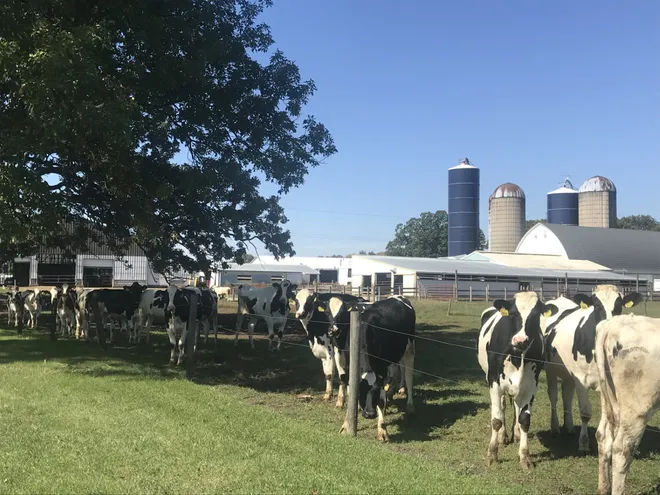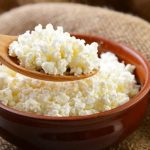
Milk prices continue to fall and to levels not anticipated earlier in the year. Class III was $18.52 in April, and fell to $16.11 in May and could be below $16.00 in June ‒ that’s $8.33/cwt. less than June 2022 prices. The last time we saw Class III this low was in 2018 and 2020. In 2018 Class III was in the $13’s for two months and the $14’s for six months. In 2020 Class III was $13.07 for one month and $12.14 for one month.
Declining cheese and dry whey prices have driven Class III down. Early January 40-pound cheddar blocks were $2.1975 per pound and cheddar barrels $1.8250 per pound. In early May, 40-pound blocks fell to $1.6825 per pound, and then down to $1.47 mid-May. While prices recovered to $1.6525, they quickly fell and are now $1.40. Cheddar barrels have held better falling to $1.4475 per pound in mid-May, recovering to $1.6525 in early June and are now $1.510. Dry whey was $0.415 per pound in early January and has declined to $0.2675.
Plenty of milk, not as much demand
These lower prices are driven by both the level of milk production and demand. There is plenty of milk. May milk production in the U.S. is estimated to be 0.8% higher than a year ago. Milk cow numbers were unchanged from April but were still 20,000 higher than a year ago or 0.3% higher. Milk per cow continues to be suppressed being just 0.5% higher. This level of milk production has stretched milk plant capacity in the Midwest as some plants lack employees to operate at full capacity. Some producers in Minnesota and Wisconsin as a result have been asked to dump milk.
Milk cow numbers and milk per cow in the five top dairy states are as follows: California 3,000 fewer cows and milk down 0.7%; Wisconsin 4,000 fewer cows and milk up 1.3%; Idaho 15,000 more cows and milk up 3.1%; Texas 1,000 more cows and 0.8% more milk and New York 7,000 more cows and milk up 2.1%. Michigan had 8,000 more cows and 2.1% more milk while Iowa added 5000 more cows and 2.6% more milk. Both Minnesota added more cows and more milk. South Dakota continues to lead in milk production being up 6.2% with 12,000 more cows. Florida had the biggest decline in milk production down 6.7% with 7,000 fewer cows. Milk production was down 3.8% in New Mexico with 10,000 fewer cows.
There is plenty of cheese to fulfill demand. Production of American cheese in April was 2.3% higher than a year ago with cheddar production 5.8% higher. However, total production of all cheese types was down slightly, 0.2%. While April 30 stocks of American cheese was unchanged from a year ago, year ago stocks were at a high level.
Inflation, economic slowdown dampen consumer demand
Fluid (beverage) milk continues to run below year ago levels and will drop lower during the summer when schools are out. Butter and cheese sales have been somewhat higher than a year ago, but cheese sales are not at a level to hold up prices. Dairy exports set a record in 2023 with strong cheese exports. But according to the US Dairy Export Council, global dairy demand has weakened at the same time competition has increased from Europe and New Zealand. Inflation and the economic slowdown have dampened consumer demand.
The volume of dairy exports on a milk solids equivalent basis in April was 13% below a year ago resulting in year-to-date exports down 0.3% from a year ago. Compared to April, year ago nonfat dry milk/skim milk powder exports were down 9%, dry whey products exports down 13%, cheese exports down 12% and butterfat exports down 65%.
Milk prices will recover, but just how much?
Milk prices will recover but how much is uncertain. Milk production will be held in check with low milk prices and still rather high feed prices resulting in unfavorable operating margins. Dairy producers who are enrolled in the Margin Protection Program, the Revenue Protection Program or had earlier protected Class III prices with Class III futures will get some relief from low milk prices.
Slaughter cow prices are favorable so culling of dairy cows is likely to increase. Year-to-date dairy cow slaughter was 4.9% higher than a year ago. Drought is a concern in a large part of the country which could affect the supply of forages, grain and soybeans which would keep feed prices relatively high this fall and winter.
Lower milk prices should give some relief to retail dairy product prices but probably not to the extent of low milk prices. Schools will start to open late summer increasing fluid milk sales. Sales of butter and cheese may show modest growth. Milk production will decline seasonally from June through September. Later this fall buyers of butter and cheese will start to build inventories for the strong sales period of Thanksgiving through Christmas. All of this will push milk prices higher.
Dairy products, exports could finish year on down side
Dairy exports will end the year lower than a year ago. US dairy prices of cheese, nonfat dry milk and dry whey are competitive on the world market, which are positive for exports and could improve exports later this year.
Current dairy futures show a slow recovery in Class III prices with August reaching $16, $17 for September, and October $18 to December. USDA forecast is less optimistic with Class III averaging just $15.50 July to September, $16.30 October to December and averaging $16.70 for the year compared to 21.96 in 2022. Based on the level of expected milk production, dairy product sales and dairy exports USDA’s forecast could well be on the low side.
Cropp is Professor Emeritus at the University of Wisconsin Cooperative Extension, University of Wisconsin-Madison























